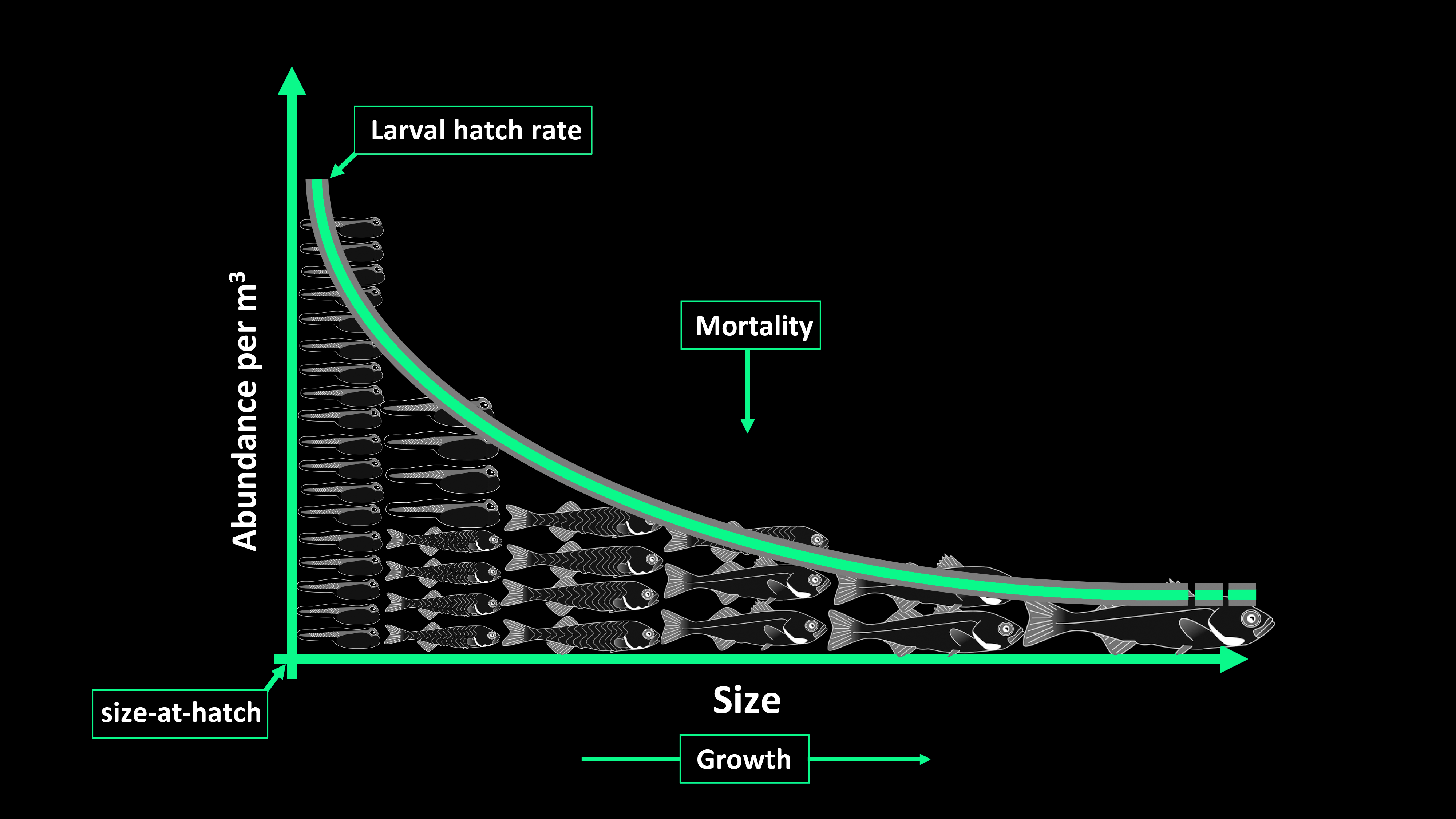For more than 100 years, the early life stages of fish - particularly between hatch and metamorphosis - has been considered a crucial period which can largely influence year-to-year variability in adult population sizes. The relative importance of growth and mortality in determining survivorship is known to be potentially equal, but as estimating growth is more accurate and easier than mortality, there is an unequal focus on growth in empirical studies. To improve our understanding of environmental effects on the larval period and cohort success, we need to better resolve both growth and mortality at fine scales relevant to the experience of individual larva. However, attaining such measures is difficult in the pelagic environment as sample sizes are often limited by both environmental constraints and the resources available for any given sampling project.
Current methods for estimating mortality rely on grouping individuals into age-bins and assessing the change in abundance between adjacent bins, which makes them particularly sensitive to sample size. In the latest Editor's Choice article, "A novel approach for estimating growth and mortality of fish larvae", the authors lean on the theory of size-structured populations which describes how the abundance of individuals in a population change with body size in relation to mean growth and mortality rates. With this understanding, the authors developed several models to simultaneously estimate growth and mortality rates of fish larvae as a continuous function of size, eliminating the need to group data into age bins.
To test how useful their new models are, they compared them to three common existing methods for estimating mortality. These are the catch-curve, weighted catch-curve, and the Chapman-Robson method. "We simulate fish populations with known values for mean hatch rate, size-at-hatch, growth, and mortality, comments lead author Charles Hinchliffe, "By incrementally applying variance to individual parameters, we conduct a sensitivity analysis and observe how well the models perform at returning the correct values for growth and morality. This comparison demonstrates, that while all models recover correct values under ideal circumstances, our new methods perform better than existing methods when sample sizes are low".

The
size-structure of a larval cohort is the result of the number of individuals
which hatch each day (i.e., the larval hatch rate) and the trade-offs between
growth and mortality from hatch to metamorphosis. The relationship between
these three parameters can be used to model the success of the larval cohort.
The study demonstrates the potential for a size-based modelling approach to improve upon our ability to empirically determine rates of population dynamics at finer scales. By incorporating this approach into field studies, along with the guidelines provided in the paper for integrating environmental effects into models, valuable insight may be gained in understanding how the success of larval fishes is impacted by their immediate environment and how growth and mortality may vary across a seascape. The authors encourage fisheries scientists to consider these methods as another tool to improve upon our collective understanding of larval success.
Editor's Choice are always free to read in ICES Journal of Marine Science.

